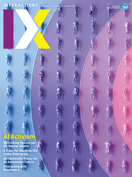Authors:
Huy Le, Sven Mayer, Niels Henze
Early and continuous user involvement has a truly long tradition in human-computer interaction (HCI). Iterative human-centered processes are widely used in academia and industry to ensure users' needs are considered throughout the design and development processes. The user-centered design (UCD) process [1] depicted in Figure 1 is a highly influential example of such a process and has proven to be flexible when new tools, such as study, prototyping, or development methods, become available. The rise of machine learning, especially deep learning [2], poses new challenges for human-centered design [3]. Deep learning currently changes work in many disciplines, such as…
You must be a member of SIGCHI, a subscriber to ACM's Digital Library, or an interactions subscriber to read the full text of this article.
GET ACCESS
Join ACM SIGCHIIn addition to all of the professional benefits of being a SIGCHI member, members get full access to interactions online content and receive the print version of the magazine bimonthly.
Subscribe to the ACM Digital Library
Get access to all interactions content online and the entire archive of ACM publications dating back to 1954. (Please check with your institution to see if it already has a subscription.)
Subscribe to interactions
Get full access to interactions online content and receive the print version of the magazine bimonthly.






